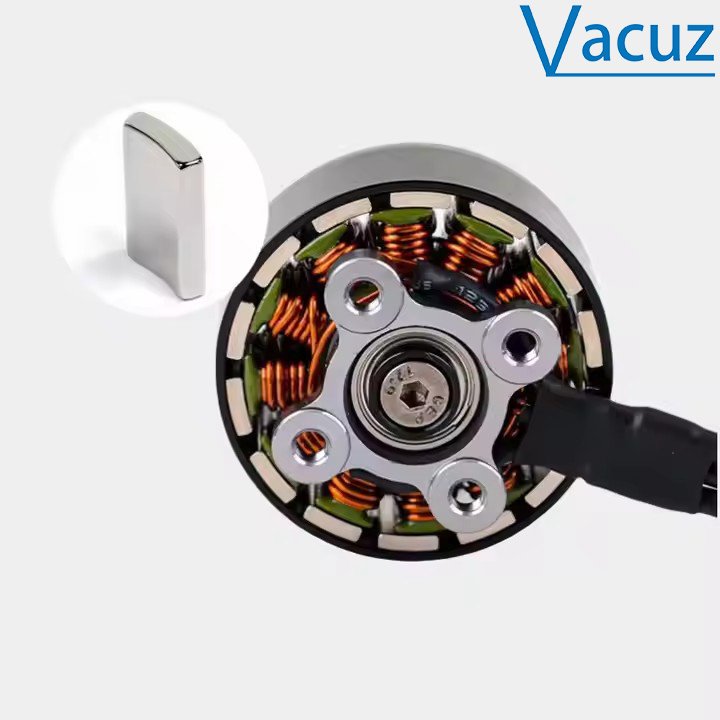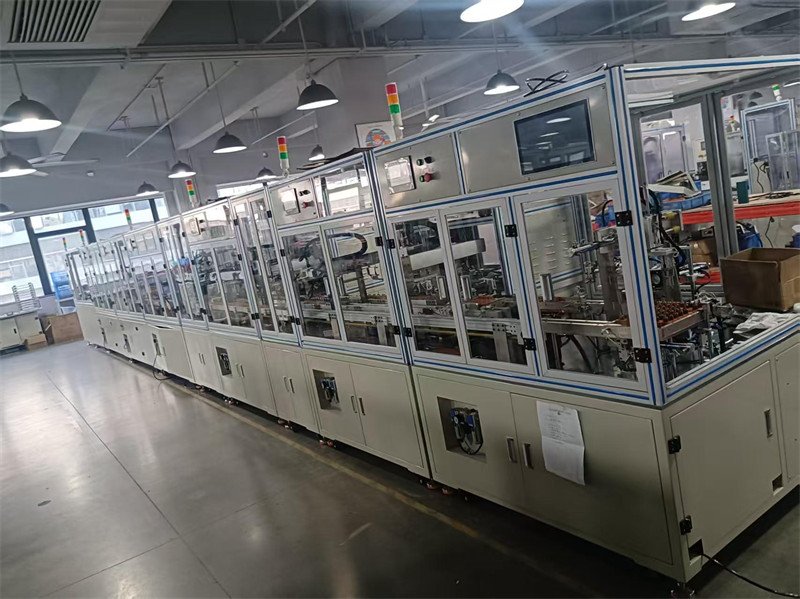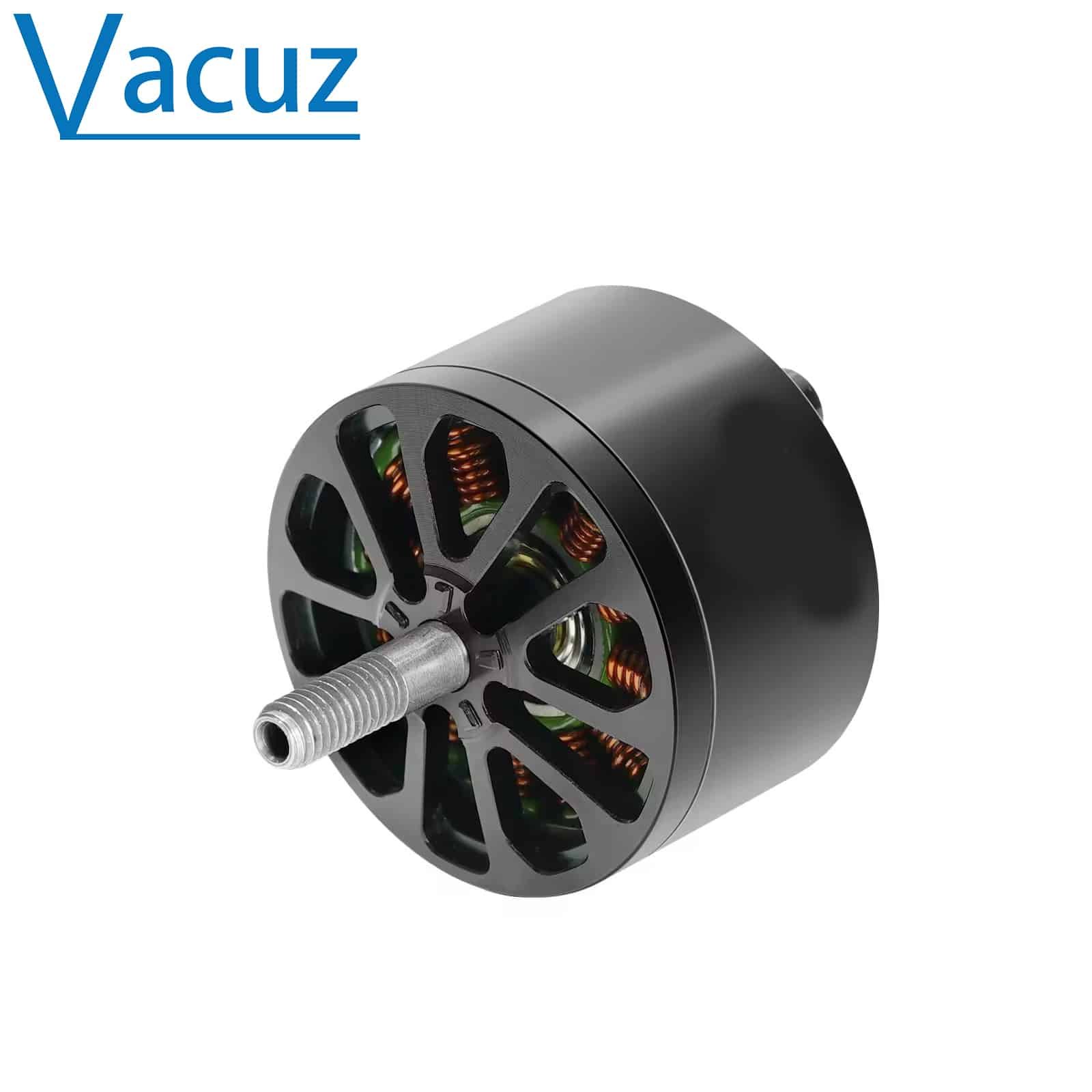A brushless motor primarily consists of a rotor and a stator. The rotor is the rotating part, and the stator is the stationary part. So, how are the two assembled? What are the features of brushless rotor-stator assembly production equipment? What are the customization requirements? Vacuz will briefly introduce this below, hoping it will be helpful!

I. Core Features of the Equipment
1. High Accuracy and Stability
Core Configuration:
Precision ball screws and servo motors ensure precise motion.
Laser displacement sensors + piezoelectric ceramic fine-tuning achieve dynamic closed-loop air gap control.
Real-Time Monitoring: Tension/position sensors are linked to the PLC to automatically adjust winding parameters (such as ±5% line speed fluctuation).
Low-Fault Design: Air bearing spindles reduce wear, and overcurrent protection circuits minimize downtime risks.
2. High Efficiency and Automation
Multi-Station Collaboration: Four-station winding machines increase production capacity by 300%, with changeover time ≤ 15 minutes (modular fixture).
Full Process Automation: Robotic loading, laser welding, and online inspection (e.g., vision systems) replace 80% of manual labor.
3. Flexibility and Compatibility
Parameter Range: Supports rotors from 30-200mm in diameter and stators with stacking thicknesses of 10-300mm, covering 95% of industry requirements.
Non-Standard Customization: Specialized magnetic shapes (e.g., curved magnets) or special windings (multi-wire parallel windings) can be developed.
4. Intelligent Management
Data-Driven: MES system + RFID automatically accesses process parameters (error rate reduced by 90%).
Predictive Maintenance: AI models provide 48-hour early warning of failures (downtime reduced by 60%).
II. Key Requirements for Customization
1. Parameter and Process Clarity
Rotor: Magnetic remanence (e.g., N52 grade) and pole pair number (4-pole/8-pole) directly impact air gap balance design.
Stator: Wire diameters ≤ 0.1mm require constant tension control (to prevent wire breakage), and parallel winding of multiple wires requires a synchronized wire arrangement system.
Process Chain: Recommended process: Core loading → Laser marking → Winding → Vacuum varnishing → Dynamic balancing test.
2. Equipment Performance
Accuracy: Shaft press-fit position error ±0.003mm (requires closed-loop control with a linear encoder).
Efficiency: Winding speed ≥ 1000 rpm (thick wire requires reduced speed to 500 rpm).
Environment: Voltage fluctuation tolerance ±10%, humidity range 30%-80% RH.
3. Expandable Design
Modularity: Quick-change fixtures (such as SCHUNK) support 30-minute changeovers.
Compatibility Testing: Verify the equipment’s adaptability to parallel winding of 30 thin wires (tension fluctuation ≤ 5%).
4. Quality Assurance System
Electrical Testing: Hipot test ≥ 1500V/1mA.
Dynamic Balancing: Unbalance ≤ 0.05g·mm.
5. After-Sales Service Terms
Response: On-site repair within 48 hours (including spare parts inventory).
Training: Full machine operation training.

What are the features of brushless rotor-stator assembly production equipment? What are the customization requirements? Vacuz has provided a brief explanation above. We hope this information is helpful!
이메일: sales@vacuz.com [fusion_form form_post_id="431″ margin_top="" margin_right="" margin_bottom="" margin_left="" hide_on_mobile="작은 가시성,중간 가시성,큰 가시성" class="" id=""][/fusion_form]

